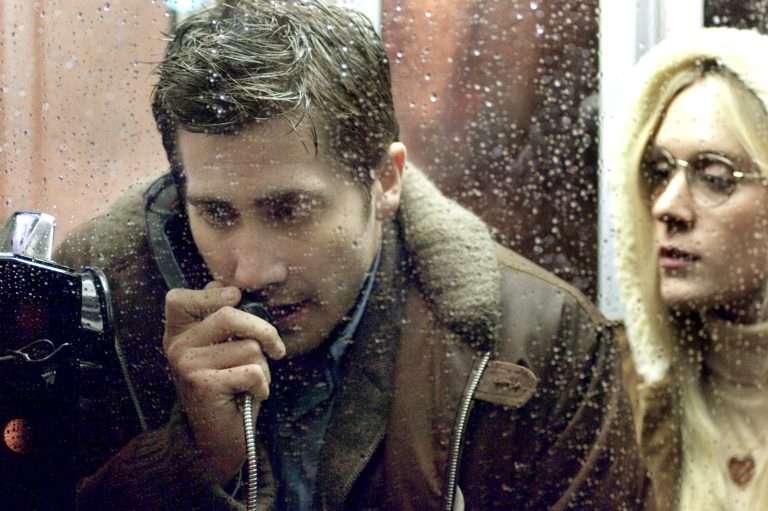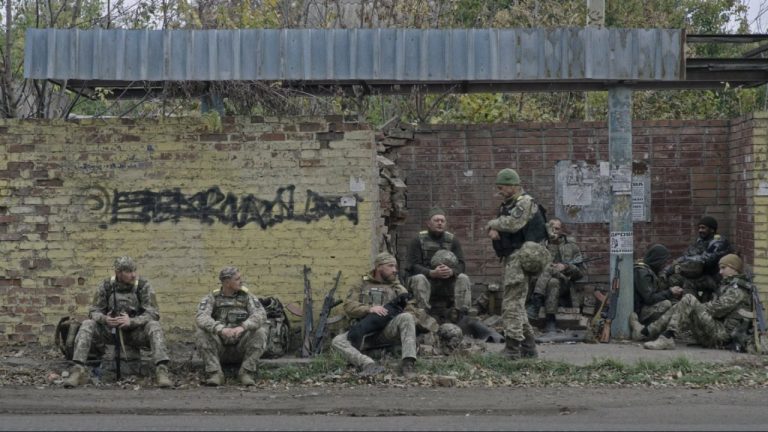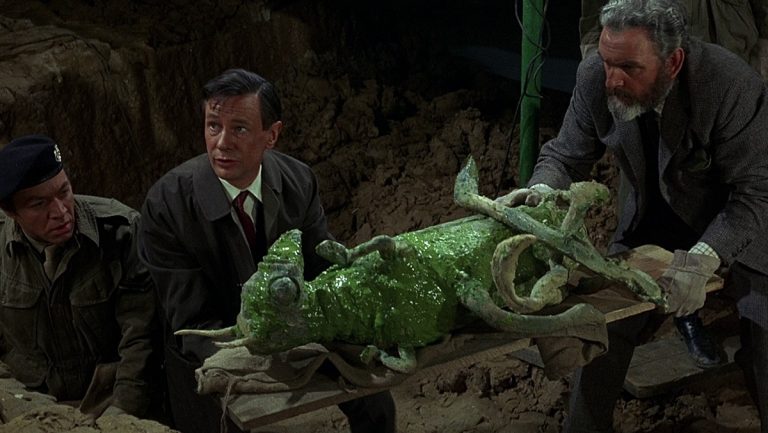People want things to make sense. Especially when it comes to horror movies, because then and only then the viewing experience seems worthwhile. And there’s nothing wrong with that. If a narrative fails to explain its existence, there’s a fair chance that it will also fail to evoke any kind of emotion. But sometimes a story works best when it is not too concerned with giving answers. When it doesn’t sit the audience down for an elaborate monologue from the villain about how everything is connected to everything. Sometimes, the distilled nature of the villain’s malice just does the job. John Carpenter’s Halloween (1978) or Wes Craven’s A Nightmare on Elm Street (1984) are good examples. There’s Some Inside Your House (2021)? Not so much.
Set in Osborne, Nebraska, the Patrick Brice directorial opens with the brutal murder of the high school jock Jackson (Markian Tarasiuk) by a masked killer wearing the victim’s face, which is a homage to every masked slasher out there and a great subversion of the “killing the blonde” trope. During the mourning period, you are introduced to the group of “misfits” which is comprised of Makani (Sydney Park), Alex (Asjha Cooper), Darby (Jesse LaTourette), Rodrigo (Diego Josef), Zach (Dale Whibley), and the late joinee, Caleb (Burkely Duffield). And before you can pace yourself with the quirks of this small town, another grisly killing takes place in the local church, thereby putting everyone on high alert. So far so good. But as the movie starts to trudge towards the end, it gradually becomes nonsensical.
Related to There’s Someone Inside Your House – Black Girl [1966] – A Thoughtful Microcosmic Tale of Neocolonialism
After the first two killings, it’s apparent that the murderer is interested in digging into the histories of the people in Osborne and then putting an end to their lives. As mentioned before, Jackson is a jock, he’s fairly misogynistic, and going by the pictures presented before him, he’s a bully. Katie (Sarah Dugdale) is a closeted White supremacist, as evident from her anonymous podcast, and she likes to use the oppressed to appear as a savior in front of the masses.
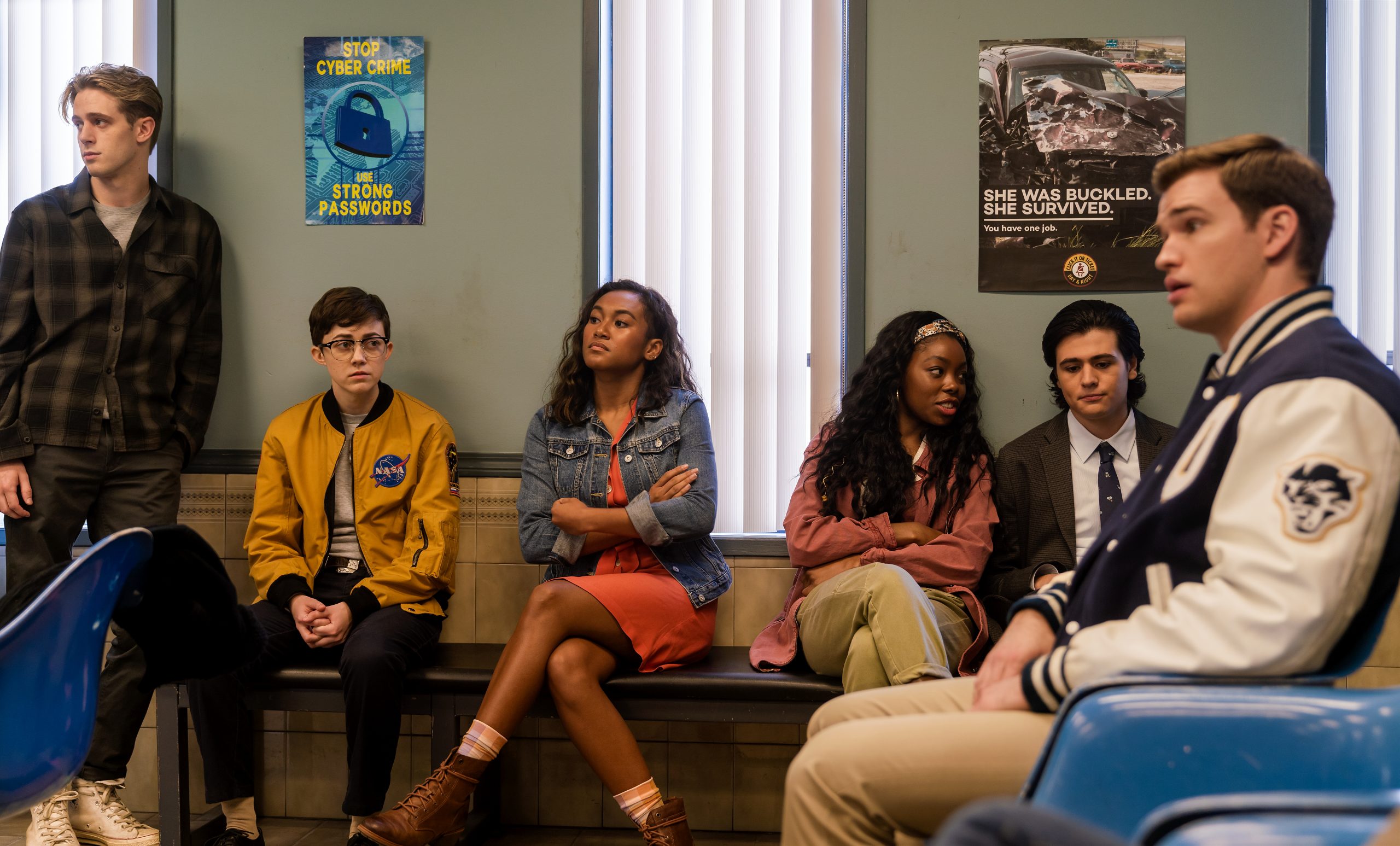
Therefore, in a messed-up way, you can understand the killer’s internalized reasoning for vigilantism. And since writer Henry Gayden uses it to shine a light on the town’s racist undercurrents and attempts at gentrification, it all feels fairly engaging. However, it’s with the third death that the movie puts itself into a corner as it is left with two options: providing a really solid reason for the deaths or chalking it all up to pure evil.
Unfortunately, it chooses a weird amalgamation of the two.
During the concluding moments of There’s Someone Inside Your House, the killer (who shall remain nameless) says that they are doing what they are doing because, unlike everyone else, they don’t have the option to wear a metaphorical mask to hide their secrets. Meanwhile, every single person in the town can conveniently conceal their true faces and go about their day without being called a hypocrite. So, this person has taken it upon themself to reveal the true identities of the people as revenge or punishment. But why kill them then? Because once you kill these two-faced, depraved individuals, aren’t you just relieving them of their actual punishment, which is living in the society in which they were pretending to be figures of righteousness? Wasn’t that the whole point of the story? That you cannot walk away from your past without coming to terms with it. Also, why kill all these people when you wanted to kill just one person?
Also, Read – Fear Street Part Two: 1978 [2021] Netflix Review: Has the creeps, thrills and chills
Through Makani, the movie tries to call out these flaws in the killer’s logic. It tries to show us, the audience, that we are wrong for joining the rest of the characters in judging everyone based on their external appearance and our internal bias. Meanwhile, the actual perpetrator gets a free pass because they don’t raise any suspicion. It also attempts to redefine the terms “sociopath” and “psychopath” because they have been used so frivolously by youngsters that it has lost its meaning. But the one-two punch of the killer’s elaborate plan and Makani getting a saccharine conclusion instead of being framed as a killer simply derails anything and everything that’s smart about the writing. And the fact that Brice practically sprints through the killer’s motivations to get to the ending doesn’t help at all. So, in an ironic way, There’s Someone Inside Your House ends up being as much of a poser as the characters in it because the subtext (or text for that matter) isn’t as profound as it thinks it is.
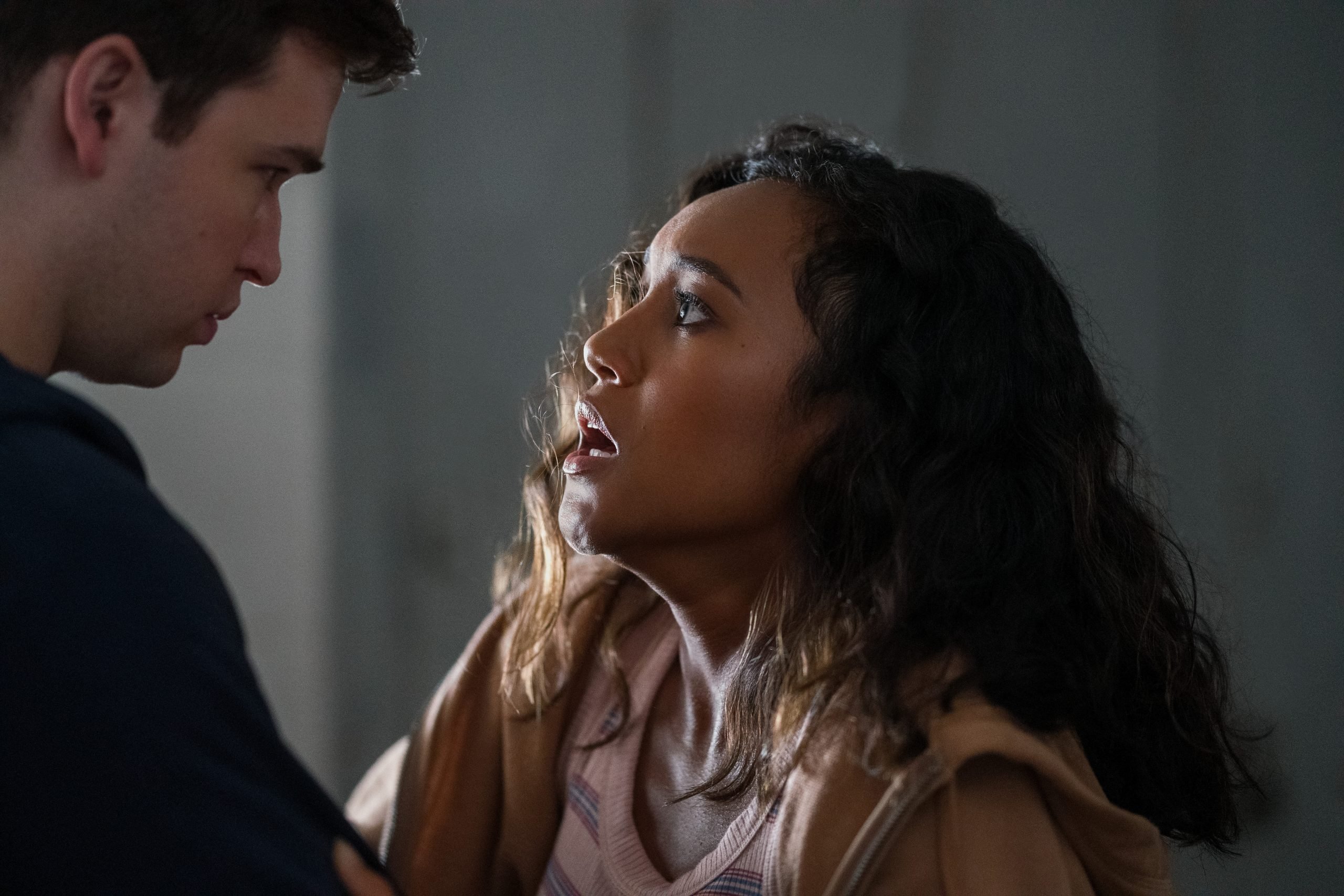
All that said, the movie displays competence in every other department. All the actors, especially Sydney Park, give spirited performances. Rich Delia’s casting is questionable because it plays into this ongoing trend of casting adult actors as teens so that they can be sexualized and featured in scenes involving the consumption of drugs. But then again, the acting is good. So, you can give it some leeway if you want to.
Jeff Cutter’s smooth cinematography is aptly matched by Zachary Dawes’s score. Michel Aller’s editing manages to strictly stick to the point. Therefore, the movie doesn’t have a lot of unnecessary scenes and moves at a healthy pace. The practical (and incredibly gory) effects are well done. It’s always refreshing to see filmmakers not opting for CGI wounds and blood because they instantly take you out of the film. The masks are genius as it beautifully blends a trope from the past with modern technology.
If the writing was any good, There’s Someone Inside Your House would’ve been a solid horror movie worthy of watching during this Halloween season. Since it’s not, you are better off watching the countless other (good) slasher films that trusted their audience’s ability to vibe with its absurdity instead of getting too tangled in the search for “answers”. Because sometimes the ambiguity of it all is a thousand times better than plain old logic.


![Before Sunrise [1995]: A beautiful love poem](https://79468c92.delivery.rocketcdn.me/wp-content/uploads/2017/05/before-sunrise-1-768x432.jpg)
